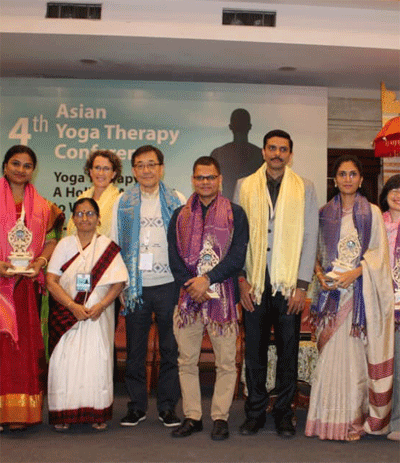
Yogic therapy is distinct from traditional yoga but remains closely related as it addresses health concerns. This article aims to explore the connection between the two. The term “yoga” can be interpreted in two ways: as the “End” goal of integration at its highest level and as the “Means” to achieve it. For advanced yoga practices, a sound mind and a healthy body are considered prerequisites.
Nadi, a vital concept in yoga, plays a significant role in the body. The human body is a complex network filled with countless Nadis, which are impossible to quantify precisely. Different authors present varying counts, ranging from 72,000 to 3,50,000 Nadis. Nadis are believed to be channels or pathways through which prana (vital energy) flows in the subtle body. While modern medical science may not directly acknowledge the existence of nadis as described in ancient texts, there are potential overlaps and areas where insights from yoga and Ayurveda could be beneficial. When one delves into the internal structure of the body, a sense of awe and wonder emerges. It instigates curiosity, realizing that the Divine Lord Himself is the architect, aided by skilled engineers and masons like Maya, Prakriti, Visva Karma, and others.
Yoga focuses on purifying these Nadis, the subtle energy channels, which hold influence over the physical body. All the subtle Prana (life force), Nadis, and Chakras have a tangible manifestation and impact on the physical body. The term “Yoga” encompasses all practices, both advanced and basic, that aid aspirants in achieving integration. These practices are designed to facilitate progress towards this unified state. As a result, Yoga is a comprehensive discipline that addresses the holistic nature of human beings.
Swami Kuvalayanandaji, a yogi & scientist conducted the first-ever experiment on yoga at the (Vadodara) Baroda State Hospital. It showcased its tangible benefits in terms of health and healing. This recognition has led to the incorporation of yogic techniques and principles into various therapeutic interventions, ranging from stress management and rehabilitation to complementary treatments for various ailments.
Yoga therapy, is a holistic approach to healing and maintaining well-being that combines traditional yogic practices with modern therapeutic techniques. It is based on the principles of yoga philosophy and aims to address physical, mental, emotional, and spiritual imbalances.
In my role as a Yoga Teacher Trainer, I am continuously engaged in the process of learning and growing. Each day, I witness the beautiful interplay of teaching and learning, where the act of imparting knowledge to others becomes a means for my own spiritual development.
Holistic approach
While many people believe that Yoga primarily focuses on the mind and spirit, a thorough examination of Patanjali’s Yoga Sutras reveals its comprehensive approach encompassing both the body and mind. These ancient teachings consider the body and mind as interconnected entities. As a result, practices like Asanas and Pranayamas, which involve physical exercises, serve as a foundation for advanced psychological practices. Through this integrated approach, Yoga facilitates the harmonious blending of psycho-physiological processes, building an holistic transformation.
According to yoga philosophy, the mind holds immense importance, not only in psycho-somatic diseases but also in all other forms of ailments, including acute conditions. Through the practice of yoga, individuals learn to tap into their innate self-healing capabilities.
The physical body takes its form based on the nature of the astral body, akin to how water assumes its shape as ice (physical) or steam (astral) depending on its state. The astral or Sukshma body resides within the gross or physical body, and they are intricately connected. The physical body relies on the astral body for its functions. The connection between the two is evident in the network of nerves closely linked to the brain. These nerves, known as the 12 pairs of cranial nerves—Optic, Motor Oculi, Pathetic, Trifacial, Olfactory, Abducens, Facial, Auditory, Glossopharyngeal, Pneumogastric, Spinal accessory, and Hypoglossal—originate from both hemispheres and pass through the openings at the base of the skull, extending to various parts of the body, including the eye, ear, tongue, nose, thorax, and pharynx.
Reconditioning of Psycho-physiological mechanism:
Yoga reconditions the psycho-physiological mechanism through a combination of physical postures (asanas), breath control (pranayama), meditation, and mindfulness practices.
The yogic practices involved in this procedure can be categorized into three main components:
:: Asanas (physical postures)
:: Mudras & Bandhas (gestures and locks)
:: Pranayama (breath control)
Each of these components holds extensive and diverse applications within the practice of yoga.





